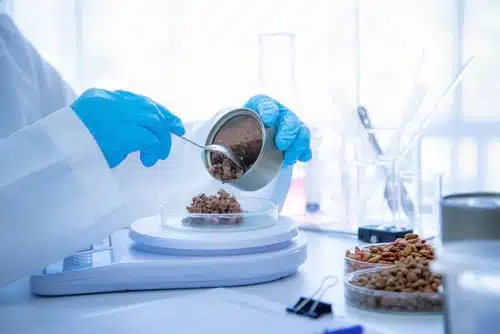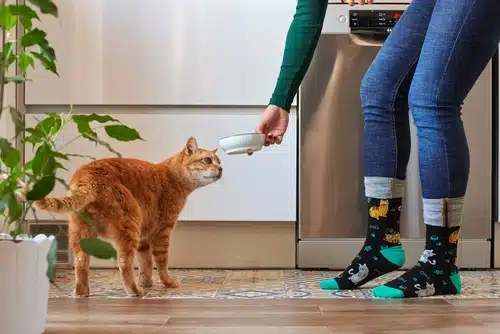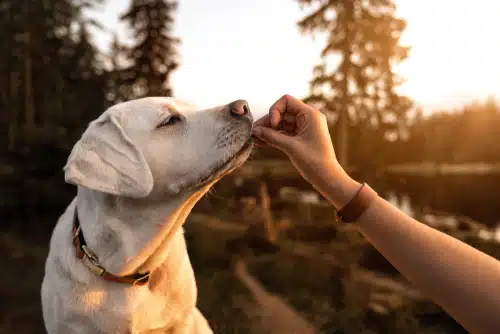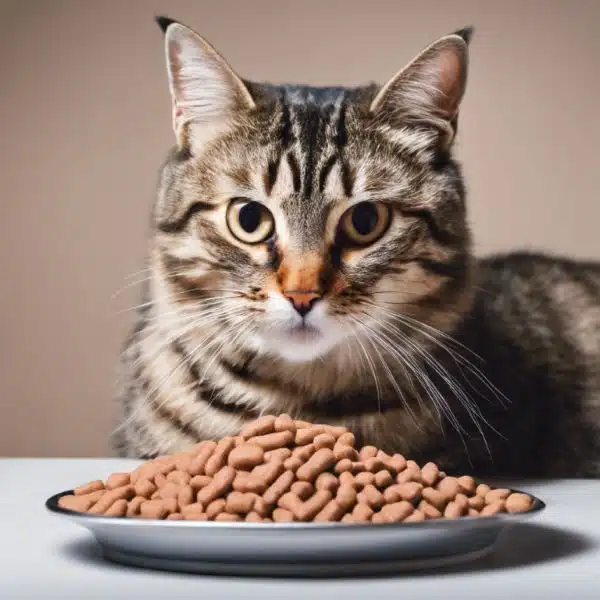Home » Blog » Pet » Pet Health & Safety » Unpacking Pet Food Regulations in Australia
Categories
Tags
animal welfare
breed profile
buying a car
buying a pet
Car
car accessories
car care
car features
car insurance
Car safety
car sales
car service
cat
cat behaviour
cat body language
Cat Breeds
cat food
cat insurance
comprehensive car insurance
Dog
Dog Behaviour
dog body language
Dog Breeds
dog food
Dog Insurance
dog training
eco friendly cars
Kitten
New Car
pet accessories
pet activities
Pet Adoption
pet breeders
pet days of the year
pet fun stuff
Pet Health
pet insurance
pet parenting
Pet Safety
pet services
Puppy
rescue pets
road safety
road trip
safe driving
Recent Blog:
Facebook Posts
1 day ago
Growing old sometimes means we can’t take care of pets anymore. Find out some advice on what to do when this happens:![]()
![]() Senior Pet Parents – Contingency Plans for Your Pet – bit.ly/44bzwkS
... See MoreSee Less
Senior Pet Parents – Contingency Plans for Your Pet – bit.ly/44bzwkS
... See MoreSee Less
Senior Pet Parents' Contingency Plans for Pets
www.pd.com.au
Sometimes senior pet parents need more downtime. For older pet owners, this can be tricky to navigate if their dog or cat is full of beans and wants to3 days ago
Before you rev up the engine, let’s run through a checklist of things to do before starting your car. Not only do these steps ensure your safety (and that of others around you), but they also help in maintaining your vehicle's longevity.![]()
![]() Driving Tips: Your Checklist Before Starting Your Car -
... See MoreSee Less
Driving Tips: Your Checklist Before Starting Your Car -
... See MoreSee Less
Driving Tips: Your Checklist Before Starting Your Car
www.pd.com.au
Heading out for a drive? Hold up a second! Whether you're dashing off to work, running errands, or embarking on a road trip adventure, there are a few1 week ago
Are intestinal worms setting up camp in your dog’s gut without paying rent? Here’s how to spot the main culprits and get rid of them too:![]()
![]() Preventing, Identifying and Treating Intestinal Worms in Dogs - bit.ly/43YjCKu
... See MoreSee Less
Preventing, Identifying and Treating Intestinal Worms in Dogs - bit.ly/43YjCKu
... See MoreSee Less
Preventing, Identifying and Treating Intestinal Worms in Dogs
www.pd.com.au
Intestinal worms, such as roundworms in dogs are one of the least glamorous topics on the planet. These intestinal parasites that basically use our dogsEver wondered about pet food manufacture and labelling regulations in Australia? You’re definitely not alone. At some point in our lives, almost every pet owner walks down the pet food aisle and wonders what’s really in those brightly coloured bags.
In this article, PD Insurance looks at the way pet food is regulated in Australia. After all, you are what you eat so what we feed our pets is pretty interesting and important for their health. At the bottom we’ve also included some great pet feeding videos and articles.
In this article

How is pet food regulated in Australia?
If you’re thinking it’s time to research the rules surrounding pet food in Australia, you’re in the right place. Surprisingly, many aspects of pet food manufacture appear not to be regulated by law. Rather, in the main, there are guidelines that manufacturers are urged to comply with.
As a result it can be up to you as pet mum or dad to knit those pieces of knowledge together when making choices around pet food. Thankfully there are some internationally recognised standards for choosing a healthy and balanced pet food diet.
We’ll get into those a bit further down and it’s worth keeping in mind that even those are simply guidelines rather than regulations. So again, the ball falls into your court to choose wisely.
Let’s begin by looking at the pet food manufacture and labelling regulations in Australia for imported vs domestic pet food.

Imported pet food regulations
When it comes to pet food brought into Australia, the Quarantine Act 1908 is the main law, overseen by DAFF Biosecurity. It primarily deals with quarantine matters so the focus is on preventing harmful substances from entering Australia’s doorstep.
However, it doesn’t have the authority to regulate the actual safety of imported pet food. And currently, there’s no other specific legislation (though there are standards, which we look into below) ensuring the safety of imported pet food.
Global guidelines for pet food regulations
You might then wonder how you’re supposed to choose any imported pet food safe in the knowledge that it’s, well, safe? Good question.
- A) You could go with choosing a locally produced pet food instead (more on that next). That way you’ll reduce your carbon footprint because you won’t be racking up as many food miles with an eco-friendly dog food or cat food.
OR
- B) You can choose a healthy pet food that follows the international pet food guidelines of WSAVA (World Small Animal Veterinary Association) / AAFCO (Association of American Feed Control Officials) / FEDIAF (the voice of the European pet food industry)
Each of these associations is internationally recognised but they provide guidelines that aren’t required by law. That said, many top pet food brands adhere to them. Some even try to exceed them in their offerings.
Many national pet food regulations also look to these international guidelines as a basis for their own parameters because they’re well recognised as the industry standard.
Here’s a PD Insurance vlog featuring Dr Cath Watson on whether it’s better choosing wet or dry pet food:
Domestic pet food regulations
Let’s talk about pet food made right here in Australia. We can categorise it into two types: pet meat and manufactured/processed pet food.
Pet meat safety
Pet meat safety is a tricky one in terms of Australian regulation because, like many facets of our lives, the approach differs by state and territory.
What we do know is that back in good old 2006 a standard was developed for the basic hygiene needs for processing pet food meat. The full title for it is the Primary Industries Standing Committee Technical Report 88 (or PISC 88 for short). Besides this technical report we also have an Australian Standard for the Manufacturing and Marketing of Pet Food (AS5812 or ‘The Standard’), which we look at below.
These are overseen by state food authorities. They’re there to ensure the hygienic production and compliance with good manufacturing practices. For more details, check with your local food authority.
Manufactured or processed pet food safety
Surprisingly, there’s no specific legislation governing manufactured pet food in any state or territory.
However, thankfully, there is a failsafe to help us pet parents know we’re choosing a nutritious and safe pet food. The Australian Standard for the Manufacturing and Marketing of Pet Food guides pet food manufacture and processing.

Pet food standards
Following the standard is voluntary for pet food makers rather than a legal requirement. Happily for those of us perusing the pet food aisle or buying online, this standard is regulated.
The Pet Food Industry Association of Australia’s role
To be a member of PFIAA (most pet food makers and marketers are) you need to comply with the standard, which is independently audited. The standard has been developed with government and industry bodies including the Australian Veterinary Association.
While this may all sound a bit confusing, with all the codes and whatnot, one thing is comforting. The AS5812 AKA ‘The Standard’ guides pet food manufacturer and labelling regulations in Australia. If you’re interested in reading more about the labelling, check out PFIAA’s brochure.
PFIAA regulates the main and additive ingredients in pet food.

Primary pet food ingredients
The main ingredients in pet food can be dual purpose. For example, providing nutrition and helping pets digest their food. Or adding to the texture or flavour of the food.
Whether pet food is dry, canned, raw, or a treat, they must be carefully selected to ensure they can fulfill their function and be safe. These can include animal sources like beef, pork, chicken, or plant products such as corn, wheat and soy. Members of PFIAA (Pet Food Industry Association of Australia) follow guidelines to ensure raw materials are safe and nutritious.
Essential nutrients like vitamins and minerals are often added to meet specific needs. For example, you’ll find that pet foods are becoming more tailored to breed, age and unique life stages (like pregnancy) or health needs.
Additives and preservatives
When it comes to pet food in Australia, the standard covers the main ingredients as well as additives and preservatives. These include micro-organisms, enzymes, vitamins and even colourings.
Pet foods that have any of these additives must list these in the ingredient list. Confusingly, they can use either the actual name, a common name or even a special code. This last one can be tricky for us pet parents. This is why choosing a pet food that adheres to the global guidelines can sometimes be the safest bet.
There are also different classes of additives. For example, antioxidants, flavours, preservatives and more, depending on what they’re used for.

Other pet food questions answered
You probably have additional pet health questions over and above those about pet food manufacture and labelling regulations in Australia. Like how to feed pets to keep them a healthy weight or what to choose between wet and dry food.
Our comprehensive blog has a wide range of articles and videos to help you make informed decisions, including:
- Dog gut health
- Can kittens eat adult cat food?
- Dry cat food vs wet
- Can dogs eat Vegemite?
- Average cat weight
- Reasons your dog isn’t eating
- Why dogs eat grass
Also, watch our vet vlog with Dr Cath Watson on protecting pets from obesity:
Protecting pets with pet insurance
While food is a cornerstone of keeping pets healthy and safe, pet insurance can be a wonderful safety net. Not just for them but for you and your wallet too.
Pet insurance with PD helps cover a wide range of unexpected vet diagnostics and treatments as well as third party property damage. Our medical treatment cover ranges from accidents to illnesses and even dental procedures for cats and dogs.
If you think of your own medical expenses when visiting the doctor, dentist, surgeon and more, consider that vet costs aren’t subsidised. However, you don’t need to be alone when paying them if you have pet insurance.
Bonus: PD Insurance gives you one or more months FREE! Click below to get a quote and take it from there.
Share On:




